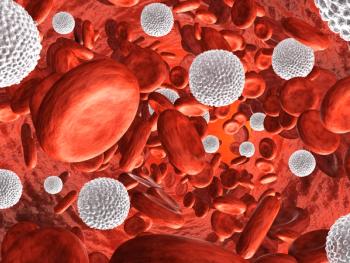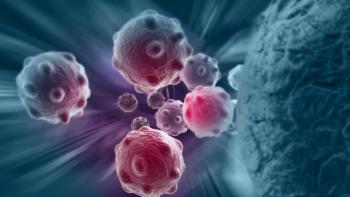
- ONCOLOGY Vol 15 No 2
- Volume 15
- Issue 2
Commentary on Abstracts #3591, #3173, and #3160
Once the radioimmunoconjugates (RICs) become more widely available, the practicing physician will be faced with important questions regarding their role relative to the unconjugated antibodies, and with a decision as to which is the
Once the radioimmunoconjugates (RICs) become more widely available, the practicing physician will be faced with important questions regarding their role relative to the unconjugated antibodies, and with a decision as to which is the preferable RIC for various potential indications. To address the first issue, ibritumomab tiuxetan was compared with rituximab in a randomized, multicenter phase III trial (abstract #3591). The final analysis of the study involved 143 patients with relapsed or refractory low-grade/follicular, or transformed NHL. The two treatment groups were similar with respect to age, presence of bone marrow involvement, number of prior chemotherapy regimens (median: two regimens), resistance to last chemotherapy, bulky disease (³ 5 cm), elevated LDH, International Prognostic Index risk groups, performance status, and extranodal disease.
Ibritumomab tiuxetan therapy resulted in 32% grade IV neutropenia, although only 7% required hospitalization for infection. Whether these episodes were febrile neutropenia or documented infections, and the nature of the infections, were not available in the abstract. Grade IV thrombocytopenia occurred in 5%. Ibritumomab tiuxetan was significantly more active, with an overall response rate of 80% compared with 56% for rituximab (P = .002), and with 34% CR/CRu for the RIC and 20% for the unconjugated antibody. Surprisingly, there was no difference in the response duration (10.9+ and 11.5+ months). The time to next therapy, which was not yet reached for ibritumomab tiuxetan, was 15.2 months for the control group. Whether or not standardized criteria were used for initiating therapy is not clear. Moreover, additional analyses suggested that quality of life was better on the RIC arm (abstract #3173).
The major toxicity of RICs is myelosuppression. Witzig et al (abstract #3160) presented an overview of the ibritumomab tiuxetan aggregate safety data from the phase I/II trial, the phase III study, and the low-dose phase II trial in patients with pretreatment thrombocytopenia, and a study of ibritumomab in rituximab-refractory patients. In these patients who had received a median of two prior regimens (range: one to nine regimens), median nadirs were absolute neutrophil count (ANC) 800/µL, platelets 37,500/µL, and hemoglobin 10.3 g/dL. Grade IV neutropenia and thrombocytopenia occurred in 32% and 8.5% of patients, respectively. Despite the neutropenia, only 7.6% of patients were hospitalized for infections. The degree of myelosuppression appears to be somewhat greater than in the initial phase I/II study (Witzig et al: J Clin Oncol 17:3793-3803, 1999), presumably because of the lower doses administered to some patients in the latter trial.
The authors reported that growth factors were used in only 17% of patients; however, the indications for using these agents were not described, nor was whether they resulted in clinical benefit. Red blood cell transfusions were administered to 18% of patients, and platelets to 22%. Prophylactic antibiotics were used in only a small proportion (10%) of patients, but the selection criteria were not provided. Serum immunoglobulins remained normal in the setting of profound B-cell depletion.
It is difficult to compare the myelotoxicity of ibritumomab tiuxetan with iodine-131 tositumomab based on the currently published information, given differences in patient characteristics, notably the presence of bone marrow infiltration and the extent of myelosuppression with prior chemotherapy. The number of patients whose counts either fail to return to normal or who develop bone marrow aplasia is also not yet available. There are as yet no data as to how chemotherapy is tolerated following RIC treatment and whether it is effective.
Secondary malignancies are a major concern in patients who have received prior RIC therapy, especially those with a history of receiving extensive prior alkylating agents, because this complication does not appear to occur with unconjugated antibody therapy. Acute myelogenous leukemia or myelodysplastic syndrome has been diagnosed in 2.4% of patients treated with ibritumomab tiuxetan (3 years of follow-up) and in 6.3% of patients treated with tositumomab/iodine-131 tositumomab (7 years of follow-up). How many more cases will occur with longer follow-up is unknown; however, it may be possible to reduce the risk by excluding patients with clonal hematopoiesis or preexisting cytogenetic abnormalities.
Another direction for the study of RICs is to exploit their bone marrow suppressive effects in the context of stem cell transplantation. The pioneering work in this field has been conducted by Press and coworkers with a series of trials using marrow ablative doses of iodine-131 anti-CD20 antibody either alone or in combination with chemotherapy (Liu et al: J Clin Oncol 16:3270-3278, 1998; Press et al: Blood 96:2934-2942, 2000). Liu et al escalated the dose of iodine-131 tositumomab as a preparative regimen for 29 patients with a variety of histologies of relapsed NHL undergoing autologous stem cell transplantation. Major responses were noted in 86%, including 79% CRs.
Evidence for benefit from the RIC was that the progression-free survival following this approach was more durable than with the patients’ longest remission or last prior chemotherapy. Building on these observations, the same investigators conducted a phase I/II trial of RIC with etoposide and cyclophosphamide (Press et al: Blood 96:2934-2942, 2000). The results in both indolent and aggressive NHL appeared to be better than historical controls who received conditioning with either etoposide/cyclophosphamide or with total-body irradiation and similar chemotherapy. Similar trials are now ongoing with ibritumomab tiuxetan. It is possible that an RIC may replace total-body radiation as part of a bone marrow transplant strategy in the future.
Articles in this issue
almost 25 years ago
Study Details Use of Amifostine in Radiation Settingalmost 25 years ago
Declines in Lung Cancer Rates-California, 1988-1997almost 25 years ago
Medicare Approves PET for Additional Cancersalmost 25 years ago
Study Contributes to Evolution of Sentinel Lymph Node Biopsy for Melanomaalmost 25 years ago
Medicare Bill Expands Cancer ScreeningNewsletter
Stay up to date on recent advances in the multidisciplinary approach to cancer.

















































































